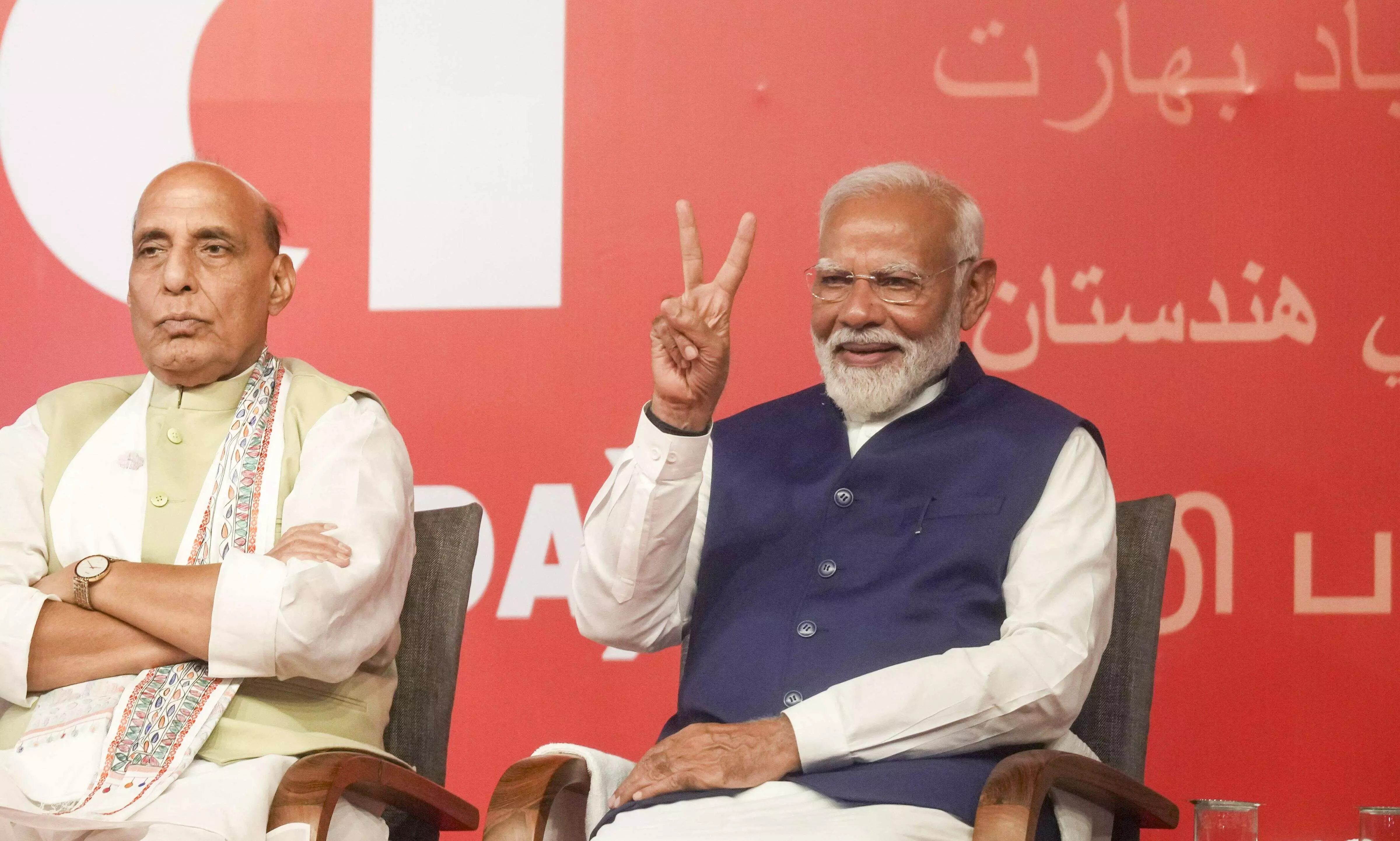Election Déjà Vu: Will 2024 mirror BJP's 'India shining' setback of 2004?

Before Tuesday, the INDIA bloc had discussions about the 2024 election results potentially resembling the unexpected outcome of 2004, labelled an ‘India Shining’ moment for the BJP. This reference points to the surprise defeat faced by the Vajpayee government after the general elections were advanced, fueled by hopes of a victory.
Despite projecting a promising "370-plus" figure for itself and "400 paar" for the NDA, the Modi government fell short, securing only 240 seats while the NDA clinched 293. While the NDA's likely return to power differs from the INDIA bloc's predictions, it also falls below the BJP's anticipated outcome.
Reflecting on 2004, the Atal Bihari Vajpayee-led government was riding high on multiple fronts, including its victory in the Kargil War, robust GDP growth, Vajpayee’s popularity, swelling foreign reserves, and fragmented opposition. These factors contributed to the decision to dissolve the Lok Sabha on February 6, 2004, six months before the scheduled end of its term in September-October.
The BJP then launched an ambitious ‘India Shining’ campaign, featuring Prime Minister Vajpayee's pre-recorded telephonic message, similar to the Modi-Amit Shah-led BJP's extensive campaigns today, with similar catchy slogans like “Abki Baar, Modi Sarkar”.
However, the tide turned with the exit polls following the polling held over four phases from April 20 to May 10, 2004. The exit polls projected the NDA falling just short of the majority mark while limiting the UPA to less than 200 seats. However, the actual results saw the exit polls overestimating the NDA's tally by 76 seats and underestimating the UPA's count by 33 seats.
In the final tally, the BJP secured 138 seats with a 22.16% vote share, trailing behind the Congress with 145 seats and a 26.53% vote share. Notably, regional parties like the SP, RJD, BSP, and DMK emerged as significant winners.
Geographically, the BJP's wins were concentrated in several states, particularly in Madhya Pradesh, Karnataka, Rajasthan, Maharashtra, and Gujarat. However, it faced challenges in Uttar Pradesh and Bihar. In contrast, the Congress secured seats across a wider array of states and UTs, though it struggled in certain regions like Madhya Pradesh, Rajasthan, and Punjab.
Despite the narrow margin between the Congress and BJP, the former acted swiftly to forge alliances and establish a UPA government, garnering support from over a dozen parties, with the Left playing a pivotal role.
Ultimately, the BJP's election slogans in 2004 inadvertently allowed opponents to spotlight other pressing issues like poverty, unemployment, and agricultural challenges, which were instrumental in shaping the election narrative.



